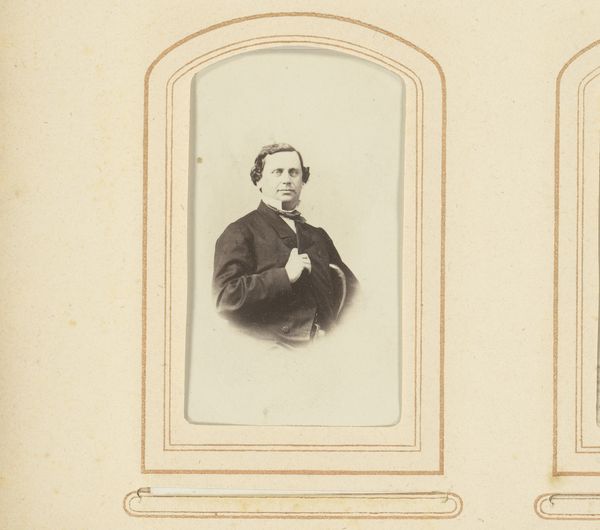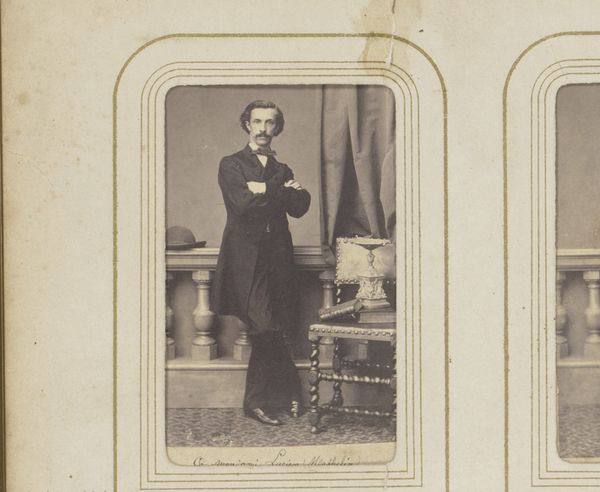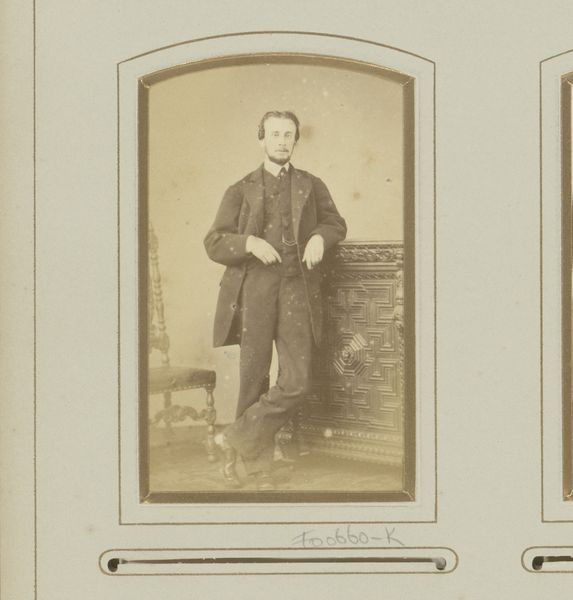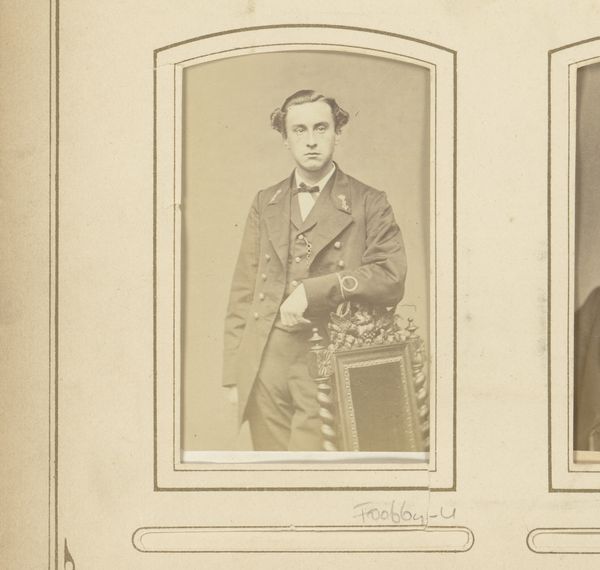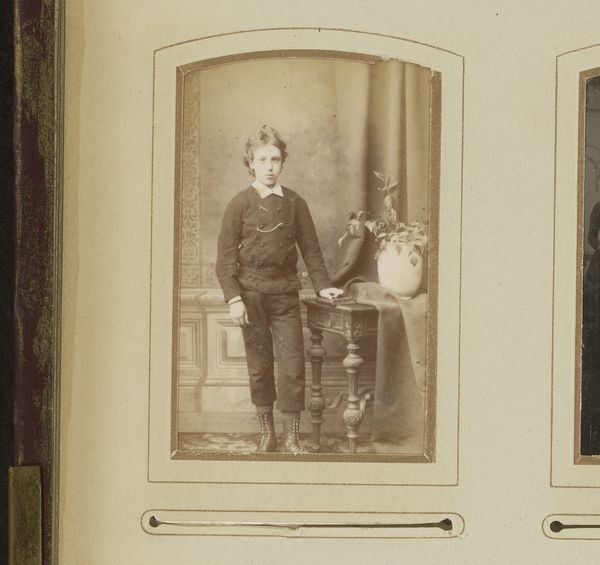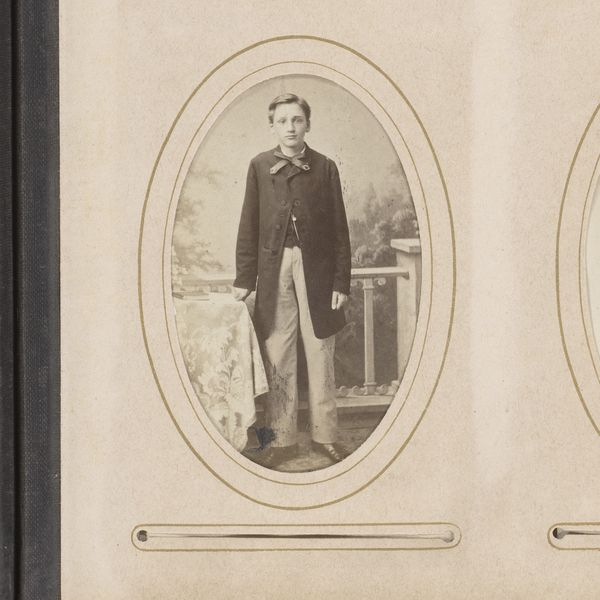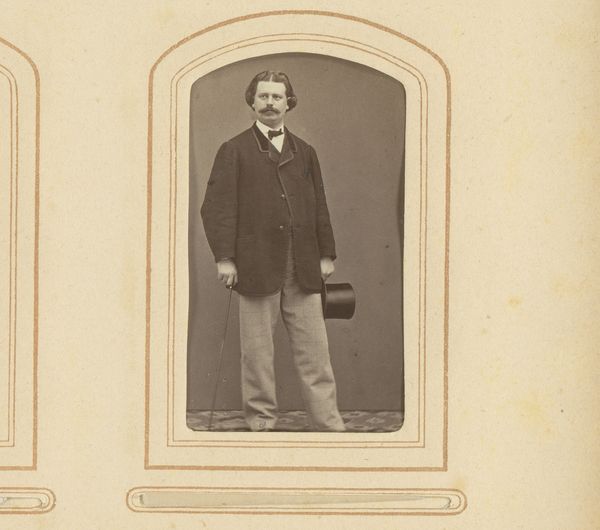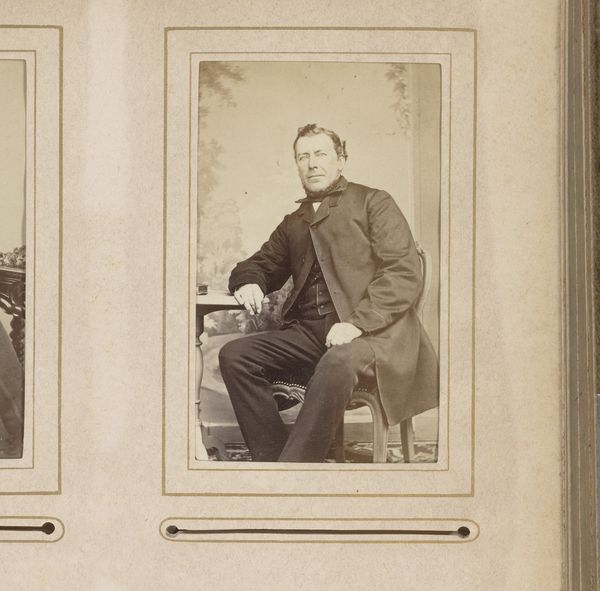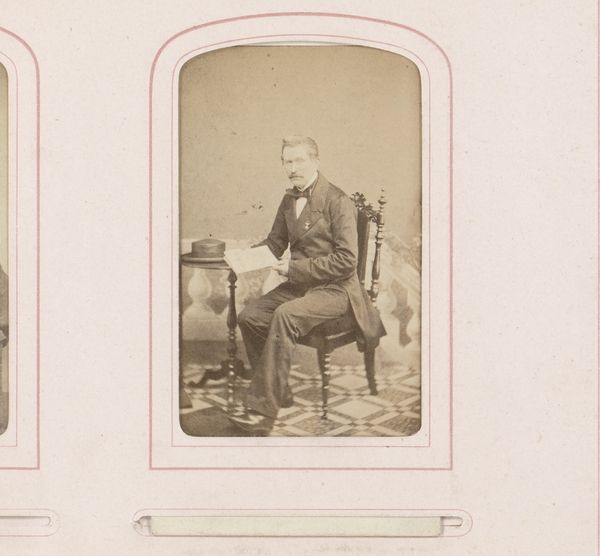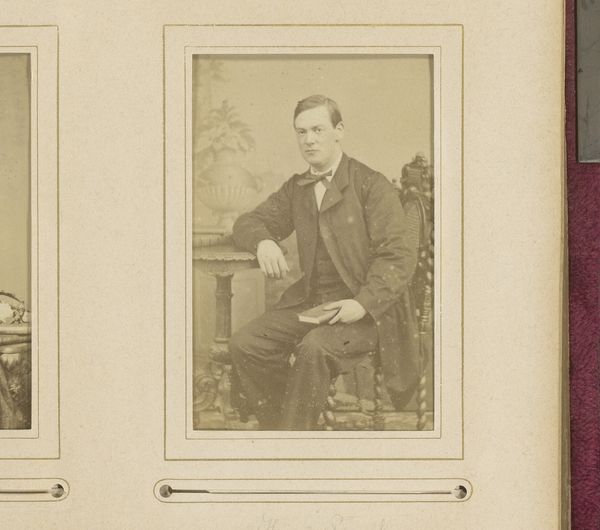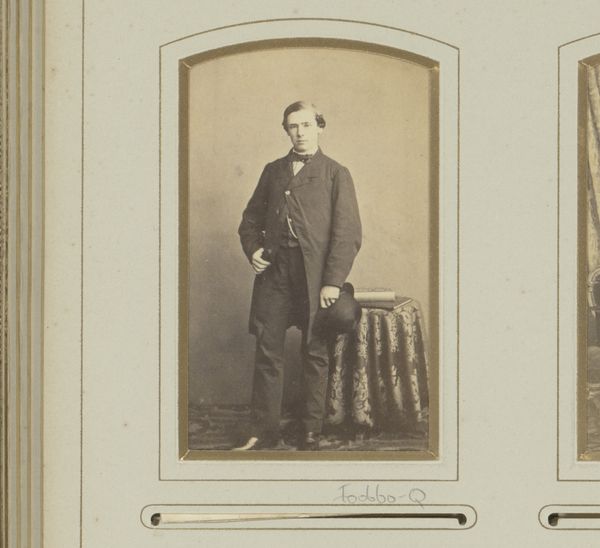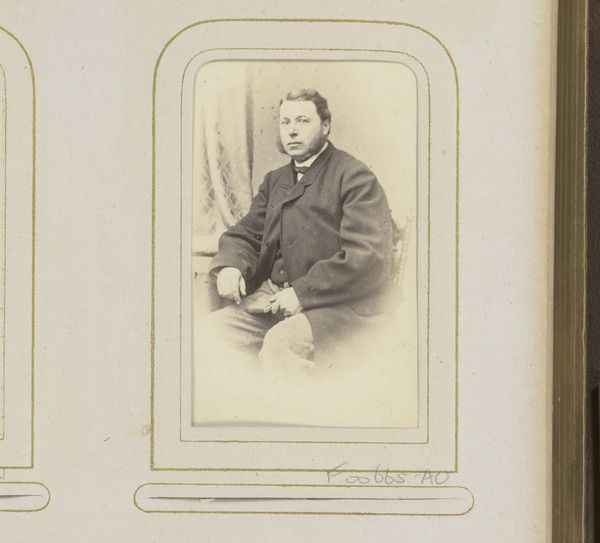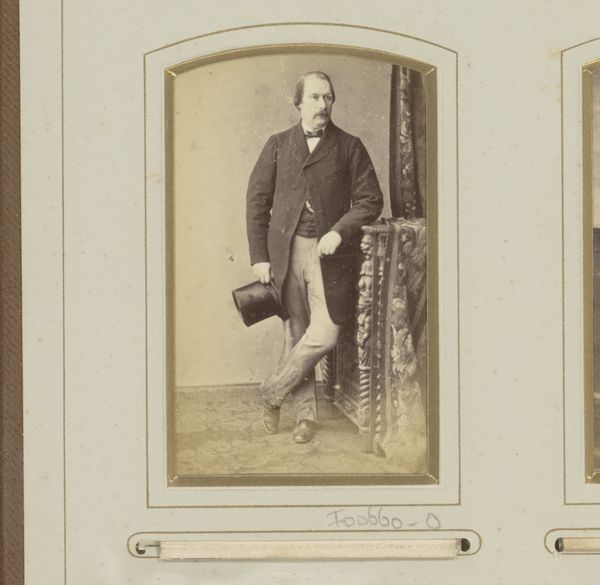
Portret van een staande man met een hand in zijn broekzak 1850 - 1900
0:00
0:00
photography, albumen-print
#
portrait
#
photography
#
historical photography
#
albumen-print
Dimensions: height 84 mm, width 51 mm
Copyright: Rijks Museum: Open Domain
Curator: This is a captivating albumen print, titled "Portret van een staande man met een hand in zijn broekzak"—or, "Portrait of a standing man with his hand in his pocket"—created sometime between 1850 and 1900. It is attributed to Jean Baptiste Joseph van den Nest. Editor: My first thought? Reserved, almost melancholy. The muted tones emphasize a contemplative mood, and the diagonal of his body is mirrored in the chair; however, his placement, slightly off-center in the frame, seems carefully orchestrated. Curator: Indeed. Consider the posture itself: the hand tucked away suggests a certain social dynamic, possibly shyness, perhaps assertiveness—even rebellion against formal portraiture's traditional constraints. We must recognize that 19th-century photography was intertwined with evolving gender roles and expectations. Editor: Precisely. Formally, the interplay of light and shadow gives the print a tangible depth, subtly modeling his features. Look how the light catches the edge of his jacket and reflects softly on the side of his face. I do appreciate the velvety texture rendered by the albumen process as well. Curator: And note how the carefully chosen clothing suggests a burgeoning middle class. These newly accessible portraits helped establish and cement social standing and document progress into modernity. Photography became a tool for personal branding, in a sense. The presence of the decorative chair emphasizes status and decorum. Editor: Status through structure! We cannot discount the symmetry created by the carefully framed shot itself—a kind of order imposed upon a burgeoning age of revolution. And the soft gradations of tone give an overall unified mood; an almost painterly finish is created with the mid-tones rendered. Curator: This work provides a valuable glimpse into 19th-century life and gender identity and social representation, making a fascinating counterpoint for contemporary theory surrounding the photographic image. Editor: Indeed—a beautiful demonstration of period photography and a clear illustration of how thoughtful formal techniques speak to a broader social environment.
Comments
No comments
Be the first to comment and join the conversation on the ultimate creative platform.

